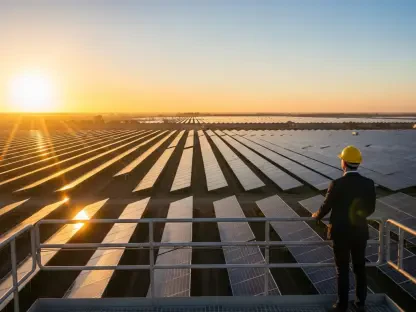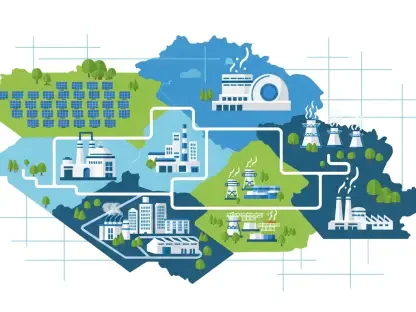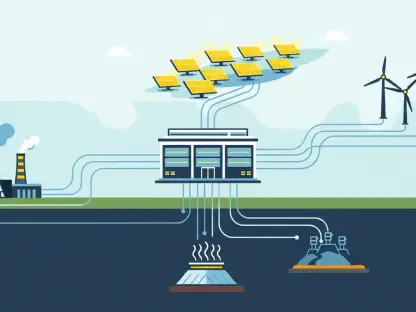The work on New Zealand’s 280MWh solar farm project at Te Aroha in Waikato signifies an important milestone in the country’s renewable energy sector. This ambitious endeavor, a collaboration between Harmony Energy and Clarus company First Renewables, was launched with a soil-turning ceremony attended by Minister for Energy and Climate Change Simon Watts. Spanning 182 hectares, the solar farm is anticipated to be commissioned by late 2026, generating 280 gigawatt hours annually, which will be sufficient to supply approximately 35,000 homes and businesses, positioning it as an essential component in New Zealand’s clean energy strategy.
A Record-Breaking Achievement in Solar Energy
Upon commissioning, the Te Aroha solar farm will stand as New Zealand’s largest solar farm at 202MWp. This record-breaking achievement provides a new benchmark in large-scale solar projects, significantly broadening the reach and impact of solar power within the nation’s renewable energy portfolio. James Irvine, Clarus General Manager for Future Fuels, underscored the importance of this milestone in advancing the nation’s shift towards cleaner energy solutions. The project is further bolstered by a Power Purchase Agreement (PPA) with Meridian Energy, ensuring the acquisition of 100% of the output for the first decade, which underlines economic viability and reliability for stakeholders.
The collaboration between government authorities, industry leaders, and financial institutions has demonstrated the crucial role of collective effort in achieving substantial progress in renewable energy initiatives. The government’s Fast Track Act has been instrumental in expediting these developments, underscoring the necessity of shifting towards a low-carbon economy. Community engagement has also played a vital role, with notable support from Te Aroha West and partnerships with local iwi, Ngāti Hauā and Ngāti Tumutumu, enriching the project through indigenous wisdom and land stewardship. These collaborative efforts highlight the integrated approach necessary for achieving New Zealand’s energy security and climate objectives.
Economic and Environmental Contributions
The construction phase of the Te Aroha solar farm, expected to reach its peak, is set to create 350 full-time equivalent jobs, with permanent positions anticipated once operational. The integration of this solar farm into the local economy underscores the project’s role in fostering economic growth and development within the region. Additionally, biodiversity enhancement measures, including the planting of 100,000 native plants and the restoration of wetlands, further emphasize the project’s environmental commitment. Already, 25,000 plants have been set for boundary screen planting, reinforcing the project’s ecological restoration component. Remarkably, sheep will be farmed on-site, utilizing solar panels for shelter, articulating a unique balance between agriculture and renewable energy.
Elecnor, a globally recognized renewable energy engineering procurement and construction contractor, has been appointed as the lead construction partner for this significant venture. Financial sustainability of the project is ensured through a syndicated debt facility involving prominent banks such as ANZ, ASB, BNZ, and MUFG Bank. This robust financial backing highlights the potential for renewable energy initiatives to generate substantial social, environmental, and economic benefits, further reinforcing New Zealand’s commitment to a sustainable future.
Collaborative Approach to Sustainable Development
The construction of New Zealand’s 280MWh solar farm in Te Aroha, Waikato marks a significant development in the country’s renewable energy landscape. The ambitious project, a collaboration between Harmony Energy and Clarus company First Renewables, commenced with a ceremonial groundbreaking attended by the Minister for Energy and Climate Change, Simon Watts. Covering an area of 182 hectares, the solar farm is projected to be operational by late 2026. Once commissioned, it will generate 280 gigawatt-hours of electricity annually, enough to power approximately 35,000 homes and businesses. This positions the solar farm as a crucial component of New Zealand’s strategy to promote clean energy. The move reflects the nation’s commitment to reducing its carbon footprint and enhancing energy sustainability. With renewable energy sources becoming increasingly vital, this project underscores the importance of shifting towards greener power generation options to meet future energy demands and environmental goals.









